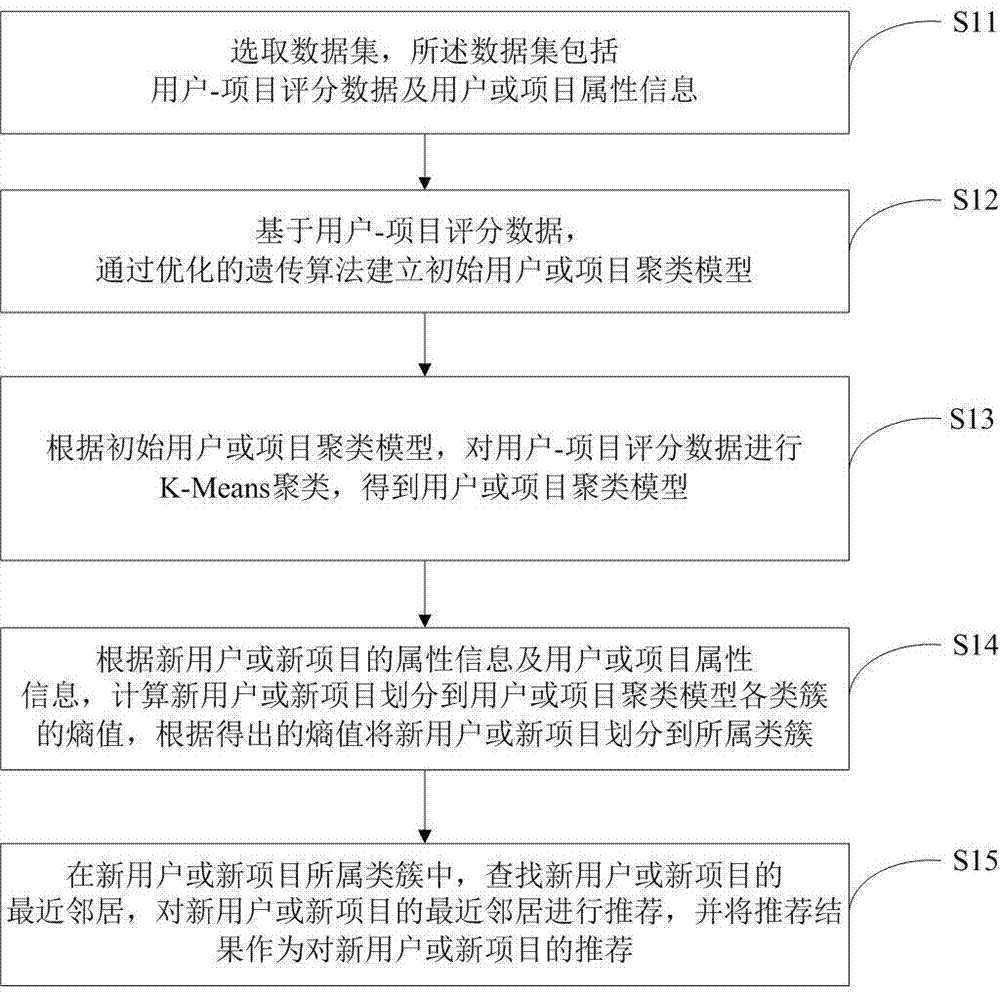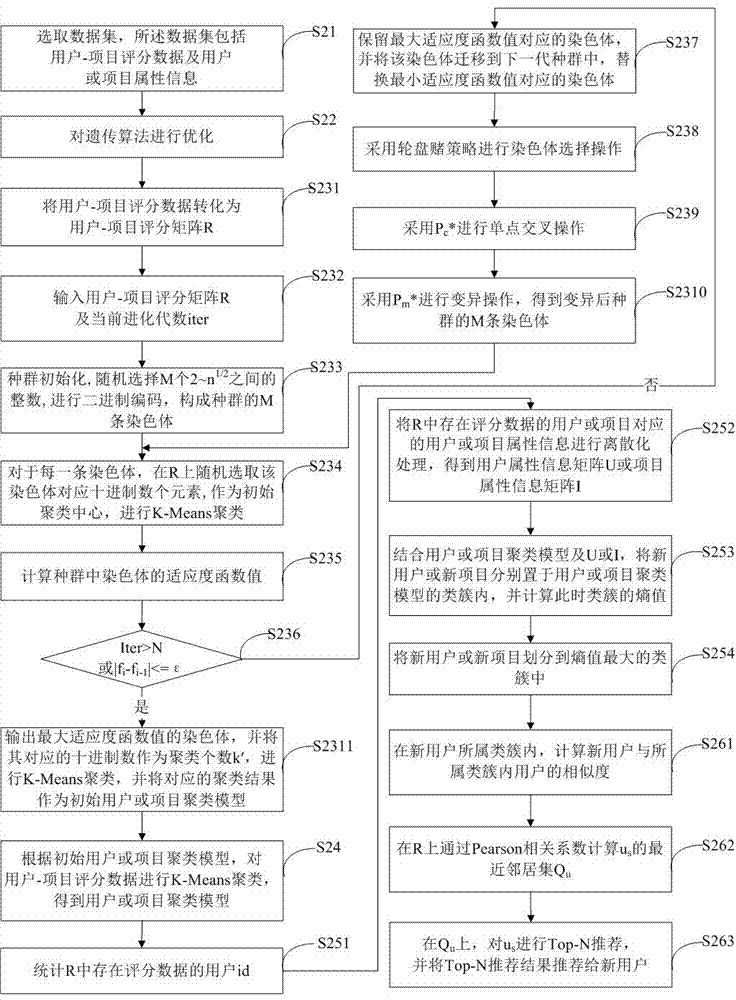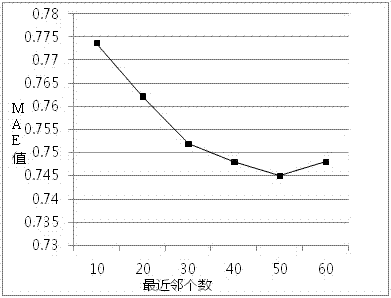Method and system for solving cold start problem in collaborative filtering technology
A collaborative filtering recommendation and cold start technology, applied in genetic rules, relational databases, structured data retrieval, etc., can solve problems affecting recommendation quality, affecting final clustering division, low efficiency and local optimum
- Summary
- Abstract
- Description
- Claims
- Application Information
AI Technical Summary
Problems solved by technology
Method used
Image
Examples
Embodiment 1
[0116] like figure 1 As shown, a method for solving the cold start problem in the collaborative filtering recommendation technology of the present invention comprises the following steps:
[0117] Step S11: selecting a data set, the data set includes user-item rating data and user or item attribute information.
[0118] Step S12: Based on the user-item rating data, an initial user or item clustering model is established through an optimized genetic algorithm.
[0119] Step S13: According to the initial user or item clustering model, perform K-Means clustering on the user-item rating data to obtain the user or item clustering model.
[0120] Step S14: According to the attribute information of the new user or new item and the attribute information of the user or item, calculate the entropy value of the new user or new item divided into various clusters of the user or item clustering model, and classify the new user or item according to the obtained entropy value New items are ...
Embodiment 2
[0123] like Figure 2-4 As shown, another method of the present invention to solve the cold start problem in the collaborative filtering recommendation technology includes the following steps:
[0124] Step S21: Select a data set. As a possible implementation mode, select the Movielens data set, including user-item rating data of 6,040 users with more than 1,000,000 items for 3,900 movies, and user attribute information of 6,040 users. The user-item rating The data includes user id, item id and rating data, and the user attribute information includes user id, user gender and user age.
[0125] Step S22: Optimizing the genetic algorithm, including:
[0126] Step a. Use the weighted silhouette coefficient as the fitness function of the individual in the population:
[0127]
[0128]
[0129] f=S (3)
[0130]
[0131]
[0132] Among them, a(i) is the average distance from sample i to other samples in the same cluster, b(i) represents the minimum value of the averag...
Embodiment 3
[0207] like Figure 5 As shown, a system for solving the cold start problem in the collaborative filtering recommendation technology of the present invention includes:
[0208] The selection module 51 is used to select a data set, the data set includes user-item rating data and user or item attribute information.
[0209] The initial model building module 52 is configured to establish an initial user or item clustering model through an optimized genetic algorithm based on the user-item rating data.
[0210] The clustering module 53 is configured to perform K-Means clustering on the user-item rating data according to the initial user or item clustering model to obtain a user or item clustering model.
[0211] The clustering module 54 is used to calculate the entropy value of the new user or new item divided into various clusters of the user or item clustering model according to the attribute information of the new user or new item and the user or item attribute information, an...
PUM
 Login to View More
Login to View More Abstract
Description
Claims
Application Information
 Login to View More
Login to View More - R&D
- Intellectual Property
- Life Sciences
- Materials
- Tech Scout
- Unparalleled Data Quality
- Higher Quality Content
- 60% Fewer Hallucinations
Browse by: Latest US Patents, China's latest patents, Technical Efficacy Thesaurus, Application Domain, Technology Topic, Popular Technical Reports.
© 2025 PatSnap. All rights reserved.Legal|Privacy policy|Modern Slavery Act Transparency Statement|Sitemap|About US| Contact US: help@patsnap.com



